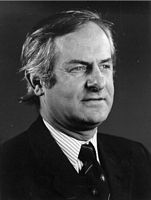


The development of microvascular surgery in Australia
Introduction
Participants
Beginnings
Developing links with academia and hospital medicine
A bevy of supporters
An ever-widening circle of contributors
Building research capacity
Nurturing relationships
Raising funds for research and development
The microsurgeon and the law
Winning community and corporate support
Leadership
The Institute and its style
Endnotes
Index
Search
Help
Contact us

Many people have worked hard and long to establish the consortium of institutes/centres/companies we have today. These organisations are:
- The Plastic and Reconstructive Surgery Foundation, a company limited by guarantee which started as a legal entity on the 6th March 1970. On 4th August 1976 the company changed its name to the Microsurgery Foundation.
- The Microsurgery Research Centre which was incorporated as a public company on 15 June 1998 and renamed the Bernard O'Brien Institute of Microsurgery on 23 June 1998 limited by guarantee.
- The Victorian Tissue Engineering Centre Pty Ltd which was registered as a company on 7 June 2000. The Australian Tissue Engineering Centre was formed on 20 June, 2003.
Since 1970 we have had the following distinguished Chairmen:
- Sir William Kilpatrick 1970-1977
- Sir Laurence Muir 1977-1985
- Alan Skurrie 1985-1992
- Ronald Walker 1992-current
. . . and Institute Directors:
- Mr Bernard O'Brien 1970-1993
- Professor Wayne Morrison 1993-current
The history and structure will, with the people involved, push microsurgery into a new era of tissue engineering for the benefit of humanity.
Ann Westmore: [2] I'd like to join Geoff in welcoming you here today. To help get oriented and thinking in historical terms, I’m going to refer to key events in the Institute’s history and show you a few images.
A brief chronology of the Bernard O'Brien Institute of Microsurgery, widely referred to as BOBIM, might start in the 1960s when Bernard O’Brien, then a researcher in the University of Melbourne Department of Surgery at St Vincent’s Hospital started microsurgery on small blood vessels and nerves. From an early stage he collaborated with the University’s Department of Ophthalmology and this led to the creation of a Microsurgery Research Unit within the Hospital’s Experimental Medicine and Surgery Department.

St Vincent’s Hospital plastic surgeon, Bernard O’Brien. Used with the permission of the Bernard O’Brien Institute of Microsurgery.
 |
Witness to the History of Australian Medicine |  |
© The University of Melbourne 2005-16
Published by eScholarship Research Centre, using the Web Academic Resource Publisher
http://witness.esrc.unimelb.edu.au/038.html